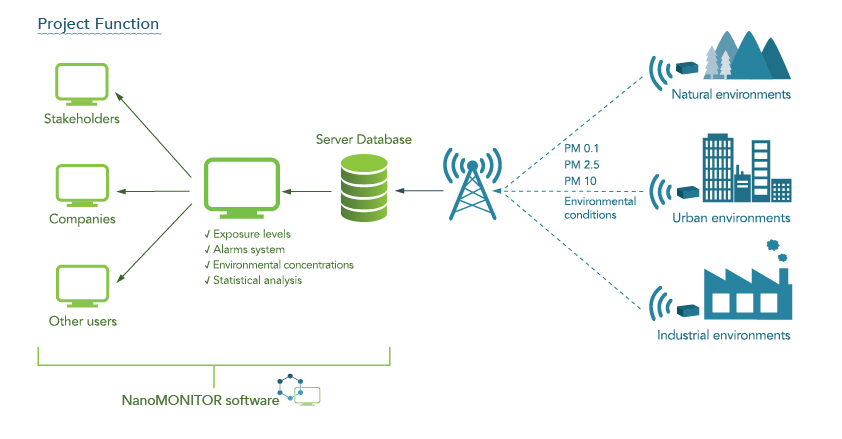H/t to Lynn L. Bergeson’s and Carla N. Hutton’s October 8, 2022 posting on The National Law Review website for the news about the US National Nanotechnology Day on October 9, 2022.
Here’s more from the US National Institute of Occupational Safety and Health (NIOSH) October 6, 2022 posting by Adrienne Eastlake, Gary Roth, and Nicole Neu-Baker on the NIOSH Science blog (Note: Links and footnotes have been removed),
Every year on October 9th we celebrate National Nanotechnology Day. The date 10-9 pays homage to the nanometer scale: 10–9 (one billionth of a meter). Anything that can be measured in nanometers is extremely small! For instance, the width of a strand of human hair is about 90,000 nanometers, bacteria are between 300–5,000 nanometers, viruses are 5–300 nanometers, the diameter of deoxyribonucleic acid (DNA) is 2.5 nanometers, and a single atom is 0.1–0.5 nanometers. A healthy young adult’s fingernail grows an average of just over 1 nanometer per second (3.47 millimeters per month on average)!1 National Nanotechnology Day was created to help raise awareness of nanotechnology, to show how it is currently used in products that enrich our daily lives and to consider future challenges and opportunities.
…
Engineered nanomaterials (ENMs) are materials intentionally produced to have particle sizes between 1 and 100 nanometers in at least one dimension. These materials can be nanoparticles, nanotubes, or nanoplates, depending on their shape. ENMs typically have new or unique properties different from those of larger forms of the same material, making them desirable for specific product applications. These properties can contribute to increased elasticity, tensile strength, electrical conduction, and reactivity. Increasingly, they are added into existing materials to give these properties to bulk materials (such as plastics or metals). Consumer products using ENMs include cosmetics, sunscreen, food storage products, appliances, clothing, electronics, computers, sporting goods, and coatings. ENMs are also used in state-of-the-art sensors and biomedical technologies. COVID-19 research and the development of vaccines depend heavily on nanotechnology, and many vaccines use nanotechnology to improve their effectiveness. You probably are interacting with nanotechnology-enabled products every day!
…
Since the early 2000s, NIOSH has been at the forefront of efforts to characterize potential workplace hazards for those working with ENMs and to ensure safe and healthy workplaces, including the creation of the NIOSH Nanotechnology Research Center in 2004. Since then, NIOSH has published a quantitative risk assessment and an elemental mass-based recommended exposure limit (REL) for each of the following: carbon nanotubes/nanofibers,4 nanoscale titanium dioxide, 5 and silver nanomaterials.6 In addition, the poster Controlling Health Hazards When Working With Nanomaterials: Questions to Ask Before You Start is a helpful and easy-to-use visual resource for the workplace.
…
In collaboration with RTI International, NIOSH administered a survey developed by the RAND Corporation to North American companies working with nanomaterials to assess health and safety practices and the impact of efforts made by NIOSH to protect worker health and safety.9 Forty-five companies in the United States and Canada that fabricate, manufacture, handle, dispose, or otherwise use nanomaterials completed the online survey in 2019. The survey included research questions about nanomaterials in use and the overall occupational health and safety culture at the companies. Additionally, other questions asked about whether the companies interacted with NIOSH or used NIOSH resources to inform their health and safety practices and policies. More than a third (37.8%) of the 45 respondents reported using at least one NIOSH resource for information about safe handling of nanomaterials. Larger companies were more likely to report using NIOSH resources than companies employing fewer than 50 employees. While the survey was limited by the small sample size, it provided valuable insight, including that future NIOSH outreach should specifically target small businesses that use or handle nanomaterials.
We hope you find a way to celebrate National Nanotechnology Day! The National Nanotechnology Initiative (nano.gov) suggests running a 100 Billion Nanometer Dash. Sounds like quite a distance, but it is just 100 meters (328 feet) or 6.2% of a mile. As we continue to provide guidance and recommendations to keep workers safe when working with ENMs, we will be right there with you until you cross the finish line… one nanometer at a time. Good luck!
You can find other activities to celebrate the day (even belatedly) at nano.gov here on their National Nanotechnology Day webpage.
